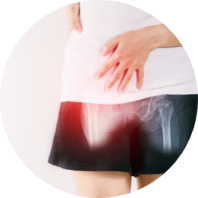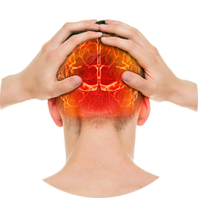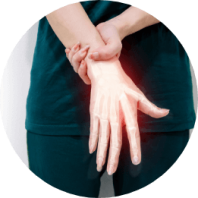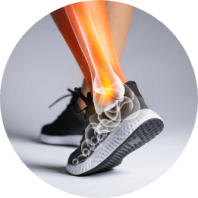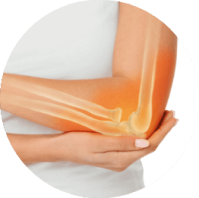Bunions
Living with bunions can pose several challenges and difficulties. Bunions often cause pain and discomfort, especially when you wear shoes that put pressure on the affected area. Even everyday activities like walking or standing for long periods may become challenging and painful with bunions.
Moreover, protruding bunions give your feet an unusual shape and may cause you to feel self-conscious.
What are bunions?
A bunion, also known as hallux valgus, is a bony bump that forms on the joint located at the base of your big toe. This happens when the big toe is angled toward the second toe, creating the bony bulge. This angling of the big toe is mainly due to pressure, which causes a change in the bone structure of the big toe and resulting in a bunion. In some cases, another type of bunion called a bunionette can develop as well. A bunionette is a bony bump located at the joint of your little toe.
Bunions are very common, and anyone can get it.
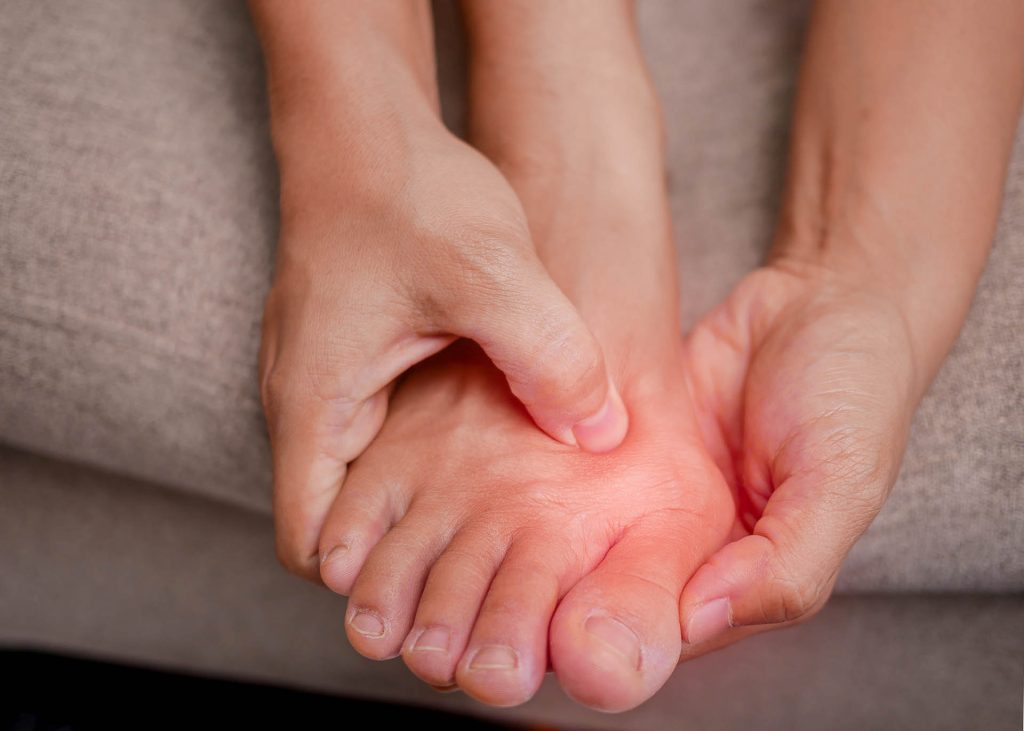
What causes bunions?
Bunions develop when the big toe pushes against the adjacent toe, forcing the big toe’s joint to get larger and stick out. Here are some common causes of bunions.
Genetics
A family history of bunions can increase the likelihood of developing them.
Footwear
Tight, narrow shoes or high heels can contribute to bunion formation.
Foot structure
Certain foot shapes and structural abnormalities may predispose individuals
to bunions.
Inflammatory joint conditions
Conditions such as arthritis can increase the risk of bunions. Inflammatory joint diseases may contribute to changes in the structure of the foot.
Injuries
Trauma or injury to the foot can sometimes lead to the formation of bunions, especially if the injury affects the alignment of the
toe joint.
Occupational factors
Certain occupations or activities that put repetitive stress on the feet or require wearing ill-fitting shoes can contribute to bunion development.
Age
While bunions can develop at any age, they are more common in older adults. The wear and tear on the joints over time can contribute to their formation.
Different individuals may have different combinations of these factors contributing to their bunions.
What are the risk factors for bunions?
- Gender: Women are more prone to bunions than men.
- Footwear Choices: Wearing ill-fitting shoes can exacerbate
bunion development. - Inherited Foot Type: You may be more susceptible if you have a family history of bunions.
- Certain Medical Conditions: Conditions like arthritis can increase the likelihood of bunions.
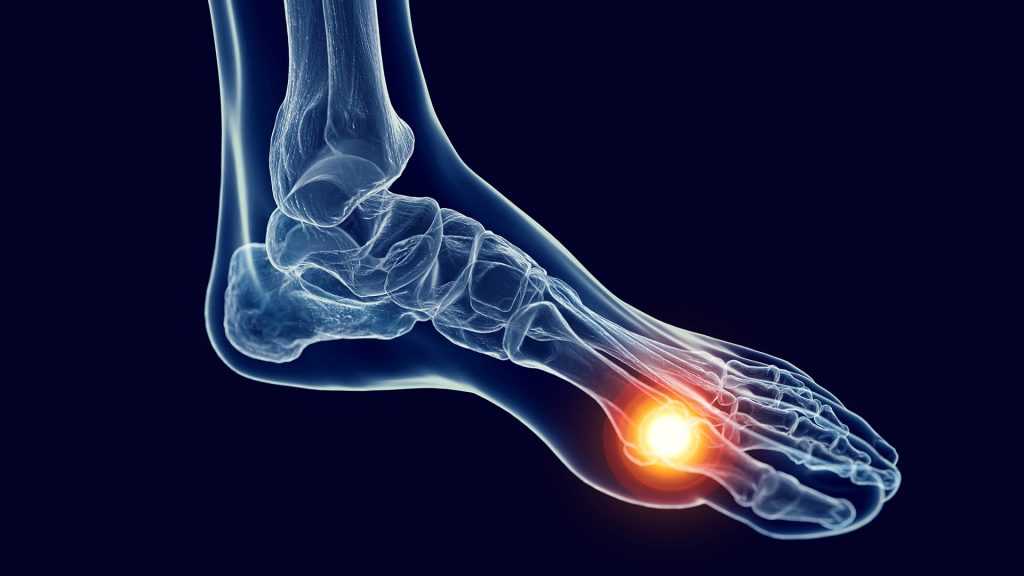
Non-invasive bunion treatment
Surgery is not always the first or only option for treating bunions. Non-invasive treatments are often considered initially, and they may ease the symptoms and delay the progression of the bunions. Here are some non-invasive treatment options.
- Footwear Changes: Wearing shoes with a wide toe box and good arch support can help alleviate pressure on the bunion and
reduce discomfort. - Bunion Pads and Inserts: These can provide cushioning and support, reducing friction and pressure on the bunion.
- Toe Exercises: Specific exercises can help strengthen the muscles around the bunion, improve toe flexibility, and potentially slow the progression of the deformity.
- Icing: Applying ice packs to the bunion can help reduce inflammation and relieve pain. Make sure to use a thin cloth to protect your skin.
- Medications: Over-the-counter pain-relieving medication may help manage pain and reduce inflammation. We recommend you consult with a healthcare professional before taking any medication.
- Orthotic devices: Custom-made or over-the-counter orthotic shoe inserts can provide additional support and distribute pressure evenly across the foot.
- Lifestyle modifications: Avoid activities that exacerbate bunion pain, and consider weight management to reduce pressure on the feet.
Bunion surgery
In cases where non-invasive bunion treatments aren’t successful, minimally invasive bunion surgery may be considered. This option involves smaller incisions, reduced scarring, and quicker recovery than traditional surgery. It is also known as keyhole surgery.
During this procedure, a few tiny incisions will be made near the big toe. Tiny bone-cutting instruments will then be inserted to remove the excess bone and realign the toe to correct the deformity.
Minimally invasive bunion surgery is much better than the traditional surgery that was performed in the past, where a single long incision is made instead of a few tiny incisions. Minimally invasive bunion surgery also reduces the risk of wound complications and wound healing problems compared to traditional surgery.
It should be noted, though, that minimally invasive surgery may not be suitable if the bunion is too severe. In such cases, the doctor will have no choice but to use the traditional method. That’s why it is crucial for patients to get their bunion checked as soon as possible, making it more likely that they can go for the minimally invasive option.
When to see a doctor
It’s important to seek professional advice if you are experiencing discomfort or if you’re concerned about the progression of your bunions. Early intervention can help manage your symptoms and prevent further complications. Consult a doctor if you experience these symptoms.
- Persistent pain: Over-the-counter pain relievers are not providing relief.
- Difficulty walking: The bunion is affecting your mobility.
- Toe deformity: The big toe is visibly misaligned or deformed.
- Concerns about arthritis: If you suspect arthritis in the joint associated with the bunion.
- Diabetes or circulation issues: If you have diabetes or circulatory problems and notice any issues with your feet, including bunions.
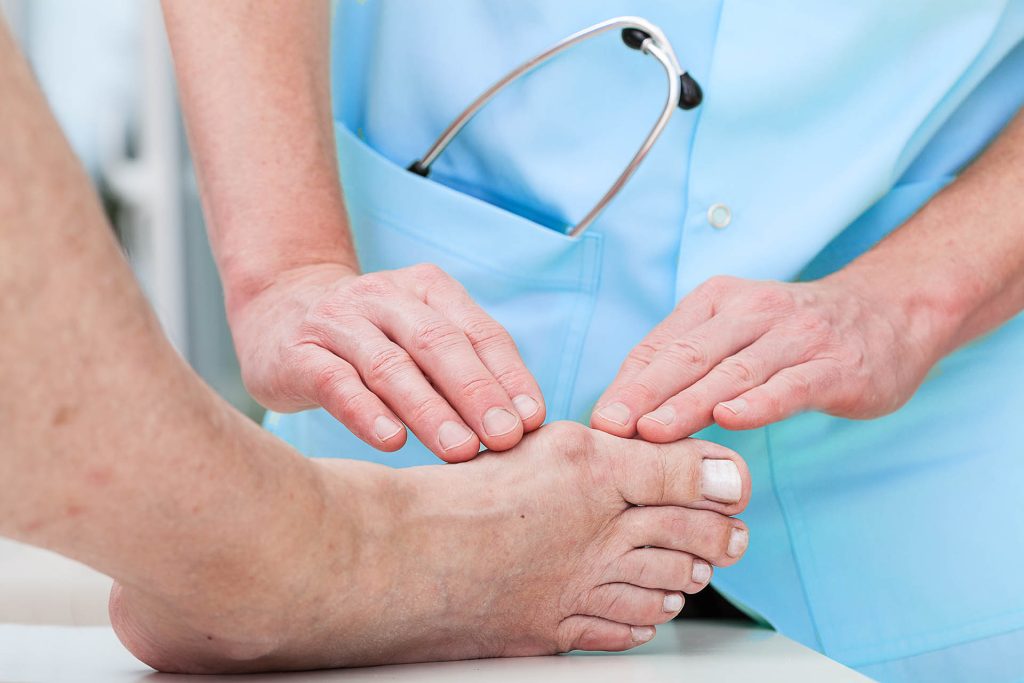
How bunions are diagnosed
Your doctor will diagnose your bunion through a thorough physical examination, medical history review, and, if necessary, imaging studies.
Physical examination
The doctor will visually inspect your foot, looking for the characteristic bony bump at the base of the big toe. They will assess the alignment of your toes, check for swelling, and evaluate your overall foot structure.
Medical history
Your doctor will note your medical history, including any family history of bunions or related foot conditions. They may also ask about the onset of your symptoms and any factors that worsen or alleviate them.
Footwear assessment
The type of shoes you regularly wear can influence bunion development. The doctor may ask about your footwear choices and whether they might contribute to the condition.
Range of motion tests
Range of motion tests are necessary to check the range of motion in your big toe and evaluate any limitations or stiffness.
Imaging studies
Your doctor may order X-rays to get a detailed view of the bones in your foot. X-rays can show the severity of the bunion, the extent of joint damage and aid in planning appropriate treatment.
Combining these elements allows the doctor to accurately diagnose your bunion, assess its severity, and recommend an appropriate course of action. If you’re experiencing symptoms or have concerns about your foot health, seeking professional medical advice is essential for an accurate diagnosis and personalised treatment plan.
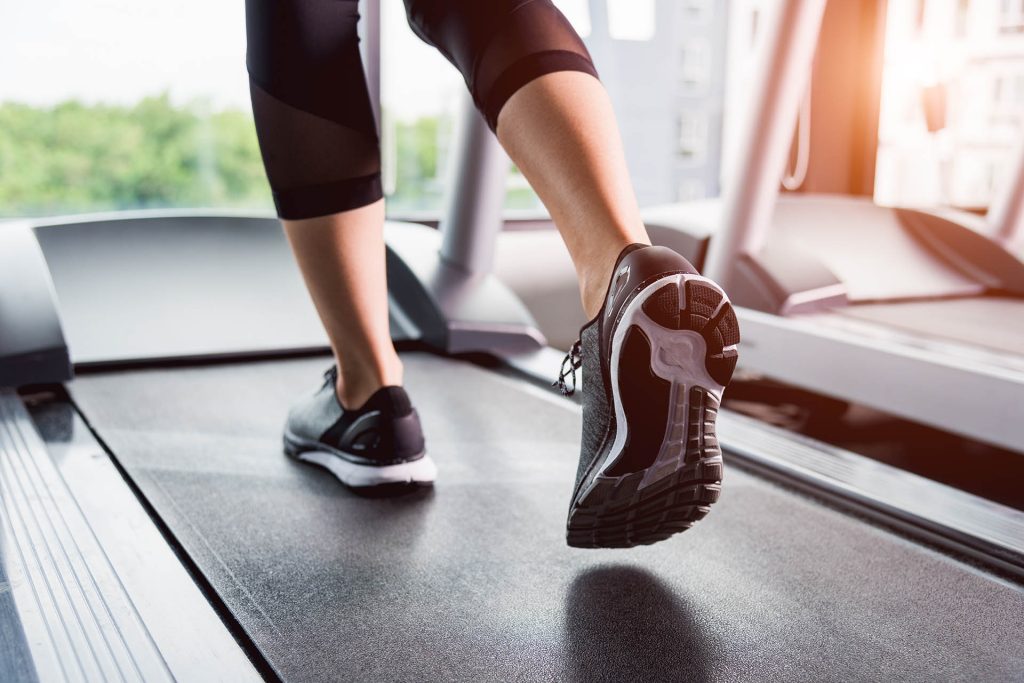
Bunion treatment in Singapore
At Cove Orthopaedic Clinic, we specialise in effective bunion treatment to address both the symptoms and underlying causes. Our orthopaedic specialist Dr Sean Ng provides comprehensive bunion care in Singapore, improving your foot health and providing accurate diagnosis and personalised treatment plans.
Schedule a consultation today to learn more about bunion treatment and its cost. Your journey to pain-free, healthy feet begins here.
Frequently Asked Questions
Bunions typically do not resolve on their own. Without intervention, bunions may worsen over time. The only way to get rid of them permanently is surgery.
Untreated bunions can lead to complications, including increased pain, limited mobility, and other foot issues such as hammertoes or bursitis. In severe cases, surgery may be required to correct the deformity.
Seeking early treatment and adopting preventive measures are crucial to managing bunions effectively.
Conditions We Treat
